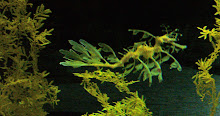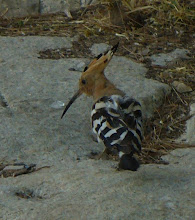Welcome (back) to Weirdbeautiful!
First link-of-the-day today is to an article by Paul Rincon on the discovery of an eel species in Palau, Oceania -->
http://www.bbc.co.uk/news/science-environment-14547942 .
The eel, which has very "primitive features" is called
Protoanguilla palau and is the first known member of a new zoological family, genus and species. More details can be found in the article [
here ]
Second link-of-the-day is to
this video and article -->
http://news.yahoo.com/blogs/this-could-be-big-abc-news/more-mere-magic-mushrooms-154207424.html
about two fungi- one of which (
Pestalotiopsis microspora) can survive on a diet of polyurethane and therefore play an important role in breaking down plastics in landfill sites. The article and accompanying video also discusses the development of a natural Styrofoam-type material essentially from fungal "roots" (mycelia) and agricultural waste. The comany producing this material is
Ecovative- their website is
http://www.ecovativedesign.com/
Last but not least, link number three is to an article and series of pictures of a huge, weird and beautiful meteorite-
http://www.dailymail.co.uk/sciencetech/article-2129747/The-beautiful-mysterious-Fukang-pallasite-meteorite.html
that fell in Fukang, in the Chinese part of the Gobi Desert. The meteroite, which was discovered in 2000 , is described as containing "translucent golden crystals of ...
olivine..[gleaming] among a silvery honeycomb of nickel-iron".









